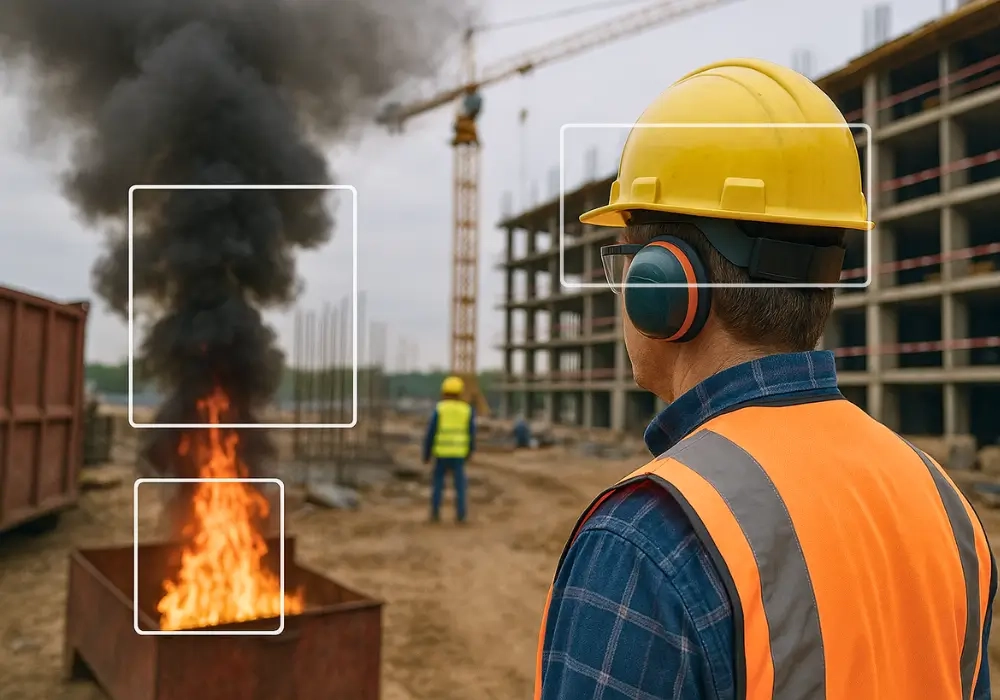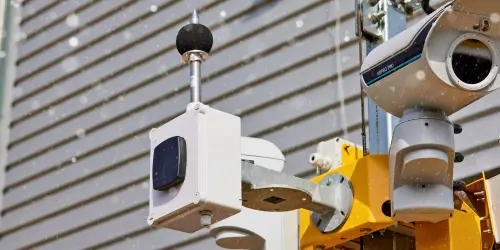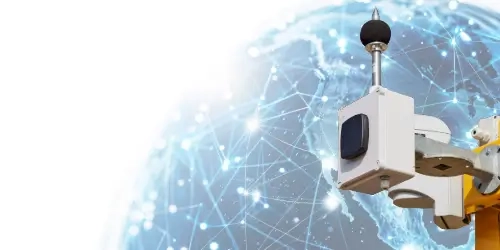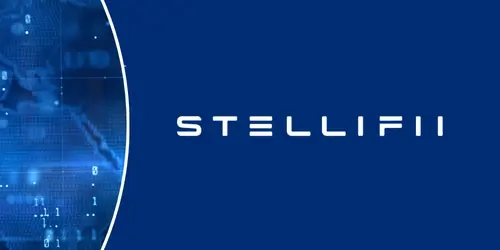Known for their high-risk, hectic environments, safety and security cannot be taken lightly when it comes to construction sites. From heavy machinery and complicated site layouts to strict PPE and environmental policies, accidents are highly likely if correct procedure isn’t followed.
AI technology has been changing the game, developing new techniques and tools to monitor key areas of concern on-site. These changes now allow for the detection of smoke, fire and PPE in real-time, with the aim of stopping risks before they can escalate.
The results: safer sites, fewer chances of project delays and increased protection for your workers, and business.
The Compliance Challenge on UK Construction Sites
There were 47,000 non-fatal injuries sustained by workers over a three-year period on construction sites, and in the year 2023/24, 51 fatal injuries occurred alone.
With tightened regulations around fire safety, PPE use and risk management, keeping compliant is essential for construction sites, however, these environments often face complex challenges.
Enforcing compliance across vast, high-risk environments means management isn’t as straightforward as firms would hope. Especially, if you’re managing multiple sites.
From multiple contractors, developing sites and strict deadlines, even the most experienced site managers and compliance teams can feel overwhelmed monitoring all safety and security matters at once.
Compliance in general tends to be considered as ‘red tape’, however, this mindset is placing workers, visitors, the public and your firm at risk.
Hard hats, hi-vis clothing, gloves and protective eyewear are essential, but in fast-paced environments, rules are sometimes overlooked. But, a small lapse can create significant risks, even if it’s due to fatigue or human error.
Smoke and fire hazards can also emerge quickly and unintentionally like PPE. However, escalation can lead to severe impacts on workers and the project’s schedule.
Traditional monitoring methods have previously relied upon human observation leading to late detection. This reactive, ‘firefighting’ approach not only impacts workers, but risks project delays, fines and reputational damage.
The challenge being, keeping consistent compliance on your construction sites where risks are constant and conditions change daily. This is where AI-powered risk detection can be utilised to transform safety standards across the industry.
The Cost of Non-Compliance in Construction
Non-compliance comes at a costly price, and that’s not just with the financials, but with the human impact also. Ignoring or overlooking safety rules can lead to devastating consequences, ranging from minor injuries to GDPR fines costing millions.
This creates immeasurable damage to workers’ families, your firm and clients, all of which demand compliance teams to be strategic enablers in order to keep ahead of frequently changing regulations.
Regulatory bodies such as HSE (Health and Safety Executive) impose strict penalties for breaches, with fines running into the thousands, sometimes millions, depending on the severity.
However, the damage of non-compliance extends further. Construction firms risk project delays, loss of contracts and increased insurance premiums when compliance becomes a firefighting mission over proactive prevention.
In an industry built around trust, reliability and safety, one compliance failure can damage relationships with clients, partners and regulators. Word of mouth spreads quickly, so when enforcement action occurs, firms are likely to find it harder to win future projects and retain existing ones.
Ultimately, non-compliance isn’t just about the bottom line, it undermines the safety culture that all construction firms thrive to build.
However, in order to tackle industry challenges, investing in tools and practices that make compliance easier, smarter and more consistent will help you avoid your firm paying the deadly price.
How AI-Powered Risk Detection is a Game-Changer for Construction
Construction sites are still one of the most dangerous environments for individuals to work in, both in the UK and globally. From towering infrastructure and high-risk machinery, compliance failures can emerge quickly.
Traditionally, compliance teams will utilise manual reporting and processing, past CCTV footage and worker statements to establish any hazards, but nowadays these methods are no longer as effective as they previously were.
The consequence: compliance leaders and their employees are becoming tired, stressed and overworked due to paperwork pile ups and chasing audits which often lead to crucial risks being missed.
That’s where AI-powered risk detection changes the game. Combining real-time surveillance, sensors, video analytics and smart detection systems, AI offers compliance leaders something they’ll likely never have experienced before: continuous oversight, instant alerts and clear, auditable data.
Below outlines the key differences between traditional methods in comparison to AI-powered risk detection:
| Aspect | Traditional Measures | AI-Powered Risk Detection |
| Hazard Identification | Relies heavily on supervisors, manual inspections or retrospective reporting, with most risks spotted after an incident has escalated. | Provides continuous monitoring via both cameras and sensors, detecting smoke, fire, PPE and other hazards in seconds. |
| PPE Compliance | Only possible through spot checks by site supervisors, meaning a high chance of non-compliance slip throughs. | Automated detection of missing PPE equipment, from hard hats to gloves, sending instant alerts to supervisors for real-time response action. |
| Audit & Reporting | Manual reporting required such as spreadsheets and witness statements which are both time-consuming and prone to errors. | Ensure digital audit trails, all of which are timestamped and offer evidence, supporting regulatory inspections. |
| Coverage | Limited to staff availability and depends on whether the checks are often periodic or completed on an adhoc basis. | Maintains 24/7 monitoring across the whole site, and is unaffected by fatigue or human error. |
| Regulatory Confidence | Only have manual reporting and paperwork to prove compliance which tends to lack accuracy. | Provides a platform with a dashboard and real-time data that demonstrates complete compliance oversight to regulators and any boards. |
| Risk Management Approach | Reactive approach - Failures usually only addressed following an incident. | Proactive approach - Helps to identify trends, predict insights and take real-time action to prevent compliance failures. |
| Resource Use | Considered labour intensive and requires large compliance teams to avoid it becoming overwhelming. | Helps reduce workload for compliance teams by automating detection and reporting, freeing up time for staff to focus on their other key responsibilities. |
The UK’s Health & Safety Executive (HSE) has already trialled AI through its Smarter Regulatory Sandbox, working with technology partners to test real-time compliance monitoring on construction sites.
These examples signal that regulators themselves are encouraging smarter, tech-driven solutions, giving compliance managers the confidence that AI adoption isn’t just innovative, it’s future-proof.
Turning Compliance into a Competitive Advantage
Compliance teams regularly face objections or are overlooked, due to their appearance of being a burden to construction firms’ progress, slowing projects down and draining resources.
However, with AI-powered risk detection, it offers the opportunity to change that perception completely. Instead of being viewed as the department that says “no", compliance teams are now able to show boards, investors and regulators how smart compliance is driving efficiency, protecting client relationships and supporting worker safety.
There are three main advantages of AI-powered risk detection that help construction firms gain that competitive edge above the rest:
Cuts Costs and Streamlines Operations
Manual reporting, site audits and paper-reliant processing takes hours of work, even for large compliance teams, all of which takes their time away from becoming strategic enablers.
The introduction of AI automates these time-consuming tasks, significantly reducing the drain on resources compliance teams face. That means fewer costly fines, lowered insurance premiums and less operational downtime caused by non-compliance incidents.
As an industry, margins are often tight and streamlined operations are vital to successful outcomes of projects, efficiency plays a key role in gaining a competitive edge compared to other construction firms.
Boosts Business Reputation
No construction firm wants to be in the headlines for accidents or safety breaches, especially for a severe or fatal incident on-site.
AI-driven risk detection helps reduce the likelihood of incidents and ensures PPE compliance across your full workforce and site. This protects your workers, and keeps your firm’s name out of the headlines.
It proves to the general public, regulators and investors that safety and compliance are embedded into the company’s culture, boosting your business reputation.
This can support future contracts, retaining current projects and gain traction from the media on successful stories where compliance was maintained.
For compliance leaders, it also provides additional protection regarding personal liability as these technological developments help display commitment and investment from your firm regarding compliance.
In an industry facing labour shortages, a reputation for looking after staff is a powerful differentiator.
Reassures Employees, Clients and Regulators
Demonstrating to the HSE and other UK regulators that your firm has real-time monitoring in place doesn’t just help during audits, it establishes your company as a proactive leader in safety.
Similar to regulators, clients are now demanding evidence of strong safety records before providing construction firms with contracts. This is because they are looking to maintain a good business reputation also, therefore expect third-party companies to meet these standards also.
For workers, AI-driven compliance monitoring and reporting provides peace of mind for them on their safety whilst working. Given the dangerous nature of construction, health and safety is prominent and utilising technology will display to workers that you’re committed to providing them with that.
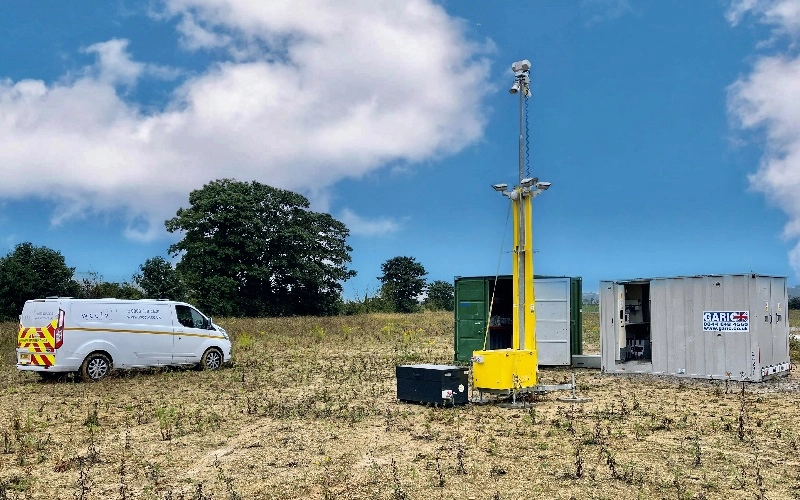
How to Overcome Cultural Pushback
Changing work culture is never easy, especially in construction where teams have been reliant upon manual safety practices and reporting for years. There, when new technology is introduced, it’s often met with resistance.
Fears around technology replacing human judgement and being watched due to lack of trust can cause obstacles and some may choose to still follow old processes, creating continued complexities with compliance.
However, in order to help workers and wider firm understand that AI technology is there to strengthen the organisation, not to replace people.
We’ve outlined key steps you can take to help overcome cultural backlash you may face if you were to introduce AI-powered risk detection on site:
-
Reframe the Narrative on AI: Ensure any messaging or campaigns to workers and the wider firm position it as a safety partner, not a sole surveillance tool. This helps to remove that concern that it’s there to simply police people.
-
Maintain Clear Communication: AI is a hot topic in the media, and there’s much discussion surrounding this which can shape individuals’ views on it. To avoid this, explain what AI will be doing in your workplace, but also what it doesn’t.
-
Engage Early: For many employees, they simply want to be included, otherwise it can appear that decisions have occurred without them in mind. You should aim to involve site managers, safety reps and frontline construction workers in testing and gain feedback from.
-
Communicate Achievements: Resistance will often occur as individuals won’t be aware of the benefits it’s providing, so try to share examples of where incidents were prevented or compliance improvements have been made due to the new technology.
-
Lead From the Top: It’s important that you encourage leaders and supervisors to model company behaviour and that they use AI insights actively throughout their job to help encourage others.
-
Reward Compliance Success: To help maintain a positive work culture, recognise teams and sites where strong safety records are shown or rapid response based on the AI risk detection.
-
Integrate Compliance into Training: Compliance should begin right at the start of an employee’s journey at a company, and to do this, you can integrate training on your compliance procedures. This ideally will include mention of the AI technology in which you use.
-
Respect Privacy: You should always aim to ensure surveillance and AI monitoring only occurs in spaces deemed public, otherwise you are likely to appear as undermining workers’ trust.
-
Celebrate and Embrace Culture Changes: Celebrating change helps employees embrace a new work culture. Highlight how the AI risk detection has made sites safer, turning compliance into a shared achievement.
Construction Compliance: UK-Specific Considerations
The UK has some of the toughest safety and compliance standards, and there’s constant development that takes place on them to improve regulations. This leads to frequent changes that can be difficult to keep up with.
With the nature of construction sites, such as the links to longstanding illnesses and environmental damage, regulatory compliance is non-negotiable.
HSE and CDM Regulations
HSE and CDM regulations demand continuous risk assessment and evidence of proactive safety management. They are designed to improve standards and worker protection throughout the course of a full project.
With security threats and dangers developing daily, regulations are constantly amended to manage these appropriately.
However, with HSE themselves already integrating AI into their business, regulators are actively encouraging construction firms to integrate this also.
Manual reporting no longer suffices for audits due to their vulnerability to inaccuracies, whether it be human errors or missed entries. Regulators are strict with penalisation on such matters, holding businesses financially accountable for unclear audits.
AI helps by providing real-time monitoring and transparent audit trails that display compliance to regulators, from fire safety to PPE standards.
UK GDPR and Data Privacy
Although the construction industry isn’t often linked to GDPR, sites process data on a daily basis, from employee and subcontractor details to client information and surveillance footage.
Due to this, compliance teams must ensure all systems, suppliers and employees follow GDPR standards in the UK.
For those that are found to be non-compliant, the ICO can implement severe penalties of up to £17.5 million or 4% of global turnover. This can significantly impact construction firms financially and reputationally.
Leading AI surveillance solutions consolidate data gathering tools into one platform, reducing the risk of data breaches from utilising multiple suppliers. This means storing CCTV, smoke and fire detection monitoring, PPE compliance and environmental monitoring all in one place.
By doing this, you’re displaying a commitment to protect individuals’ data, especially when using encrypted systems, providing peace of mind for workers and contractors, and helping to maintain a positive business reputation.
Board Accountability
With frameworks like the Senior Managers & Certification Regime, compliance failures can have personal consequences.
This is a UK regulatory framework that increases individual accountability in financial services to reduce harm to consumers and strengthen market integrity. The aim being to raise standards for personal conduct.
It applies to almost all firms regulated by the FCA and the PRA, including banks, dual-regulated insurers, and other solo-regulated firms.
AI risk detection technology helps automate records and reports demonstrate you’re taking reasonable steps to safeguard both the business and leaders’ personal accountability.
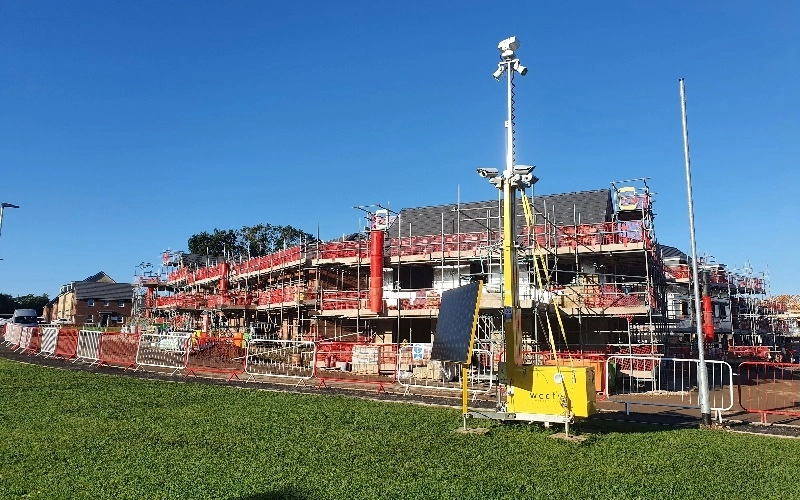
WCCTV Powered by Stellifii: Making Compliance Strategic, Not Stressful
Compliance is a constant balancing act between safety, regulation and resources, but at WCCTV, our in-house platform, Stellifii aims to enhance our products and allow construction firms to take back control on compliance.
Combining advanced AI with market-leading CCTV solutions, WCCTV delivers real-time smoke and fire detection that spots risks in seconds, protecting workers and assets before incidents escalate.
Additionally, the smart detection system offerings alongside this, including PPE monitoring ensures that every person is properly protected and equipped on site. This removes the need for endless checks, and simplifies the process through automation.
Every alert, every response, and every safety action is logged automatically, creating a secure, auditable record for HSE inspections and regulation audits.
The result? Compliance that’s not a burden, but a strategic advantage, one that builds trust with regulators, reassures clients and protects the workforce that keeps every project moving.
With our security solutions, from CCTV Towers to Redeployable CCTV Cameras, construction firms across the UK can focus on progress, knowing that safety and compliance are always under control.
Transform compliance from a daily challenge into a lasting competitive advantage, and contact us today!
